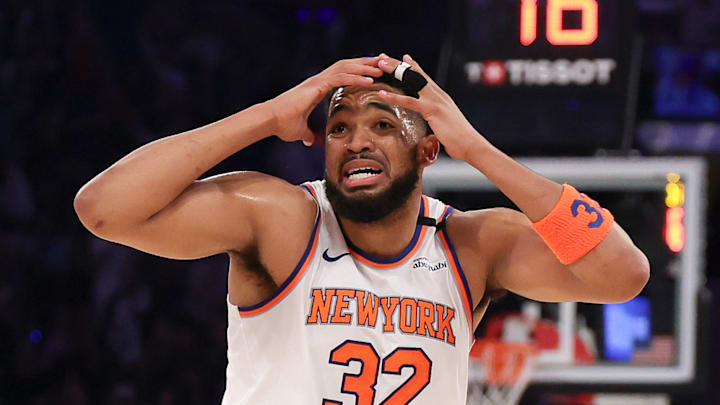The New York Knicks enter the 2025 NBA offseason with plenty of work to do, but without the conventional flexibility and trade assets to make meaningful changes. That’s led many to wonder whether they’ll need to move a core piece.
Does Josh Hart need to go? Or Mikal Bridges? Do the Knicks need to try turning Karl-Anthony Towns into a different kind of star? Or a handful of rotation players?
Short of dealing Jalen Brunson, the Leon Rose-led front office will consider everything. But despite what most think, the Knicks do have the tools to improve without knifing into the core. And those tools aren’t draft picks.
They’re draft swaps.
The Knicks’ draft swaps have real trade value
New York cannot promise other teams a first-rounder this summer. It’s prohibited from sending out any of its own after flipping so many in the Mikal Bridges trade, and the 2026 Washington Wizards pick will turn into a pair of second-rounders if it lands inside the top 10. (Related: It’s totally landing inside the top 10.)
The Knicks do, however, have the ability to offer first-round swaps of their own picks in 2026, 2030 and 2032. Now, swaps are never guaranteed to have value. Teams receiving them must be better than New York in that given year to use them.
This lowers the value of a 2026 swap. The Knicks will be good enough to draft somewhere in the late-20s. But a 2030 and/or 2032 swap? That’s a different story.
Those drafts post-date every single contract currently on New York’s books. Other teams can talk themselves into believing that this core will age out, that the Knicks will be bad, and that they’ll end up with a top draft selection as a result.
Draft swaps can get the Knicks immediate first-round prospects
Draft swaps alone aren’t getting the Knicks into the Giannis Antetokounmpo sweepstakes for a multitude of reasons. Most notably, the addition of expensive players will demand New York include some combination of Towns, Bridges, Brunson, Hart, and OG Anunoby in any package.
But the Knicks don’t need to go nuclear. For all of their frustrating flaws, they have an enviable top seven in Brunson, Towns, Anunoby, Bridges, Hart, Mitchell Robinson and Deuce McBride. Draft swaps can help deepen the rotation already in place.
Acquiring current draft picks is the most popular course of action. In this scenario, the Knicks dangle distant draft swaps to teams with extra first-rounders in hopes of snagging cheap and immediate help.
Would the Brooklyn Nets, as one example, consider giving New York two picks from No. 19, No. 26 and No. 27? Would a team short on roster spots and heavy on future draft picks like the Houston Rockets (No. 10) or Oklahoma City Thunder (No. 15) send out an even higher selection?
The Knicks can also use swaps on established players
These swaps and some of the Knicks' cheaper contracts can be used to land inexpensive players who provide more proven punches, too. Maybe 2030 and 2032 swaps, plus the Wizards pick, Pacome Dadiet and PJ Tucker’s salary gets you Toumani Camara. Or could you send the swaps to Brooklyn, Houston or Oklahoma City in exchange for actual picks, and then ship those selections to the Portland Trail Blazers?
Does similar framework get you Keon Ellis from the Sacramento Kings? Or Jaylen Wells from the Memphis Grizzlies? Or the extension-eligible Tari Eason from Houston?
These are just a couple of (ambitious) names. There are others. The Knicks can also use these swaps to get picks that they attach to larger salaries as part of a blockbuster.
And that’s the entire point: New York may not be flush with traditional assets or flexibility, but it has the tools to keep improving—without blowing up the core.
